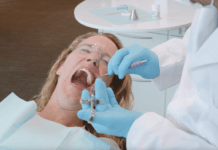A team of researchers from the University of Illinois Bioengineering department has helped advance the field of dentistry with their latest groundbreaking research. The scientists successfully sequenced the genomes of three different strains of Streptococcus sobrinus, a bacteria which is known to contribute to tooth decay. Their work was featured in the journal Microbial Resource Announcements, which is published by the American Society for Microbiology.
About Dental Caries
Dental caries is a chronic disease which can eventually lead to serious health complications. The National Institute of Dental and Craniofacial Research recently conducted a National Health and Nutrition Examination Survey and discovered 92% of adults, from the ages of 20 to 64, had dental caries in their permanent teeth.
Two primary bacterial strains, Streptococcus sobrinus and Streptococcus mutans, are known to cause dental caries. The microbe Streptococcus mutans can quickly convert sugar into acidic by-products, which can eventually lead to decay. Although there’s a large volume of existing research which is focused on Streptococcus mutans, Streptococcus sobrinus is rarely studied. This is because Streptococcus sobrinus is only found in 10 to 14% of carious lesions; even though this microbe is associated with the poorest outcomes, especially in children. It is also difficult to examine in a lab environment. As a result, the scientific community hasn’t known much about Streptococcus sobrinus before the University of Illinois study.
The University of Illinois Study
A team of undergraduates and Master of Engineering students mapped out the entire genome sequence for Streptococcus sobrinus. The group was led by Dr. Paul Jensen, an assistant professor in the biomedical department at the University of Illinois.
The researchers decided to examine Streptococcus sobrinus for two reasons. First, they realized there wasn’t enough information about the bacteria. Second, they were curious to learn why it causes dental caries to accelerate at a higher rate when paired with Streptococcus mutans.
After the research team mapped the genetic sequence of Streptococcus sobrinus, they decided to continue their research using virtual simulations with genomic-scale computational models. Dr. Jensen believes this method will help them to examine the unstable bacteria better because previous, lab-based experiments on Streptococcus sobrinus weren’t overly successful.
The scientists are using virtual simulations to understand how the two bacterial strains work together and interact with each other. They are also hoping to learn why Streptococcus sobrinus leads to a faster rate of decay when it is paired with Streptococcus mutans.
Jensen revealed the team has already made some discoveries that will prove useful in the future. So far the computational models have revealed that Streptococcus mutans bacteria is constantly searching for nearby bacteria cells that are very similar. This process, known as quorum sensing, uses peptides to identify when other Streptococcus mutans cells are close. Locating other cells allows for biofilm formation and an increase in bacterial virulence. However, Streptococcus sobrinus does not follow the same method as Streptococcus mutans bacteria. They are working to investigate why it does not use quorum sensing to identify other bacteria.
The research team believes after they have completed multiple experiments, it will be much easier for people in the medical community to make informed decisions and medical therapies which can target the two bacteria and prevent tooth decay.
The Illinois research team uploaded the genetic sequencing information they discovered to the GenBank public database. This will allow scientists around the world to conduct further research and understand how Streptococcus sobrinus impacts tooth decay.
SEE ALSO: Is Saliva the Future of Diagnostics?
DON’T MISS: Do Genetics Play a Role in the Failure of Composite Fillings?











